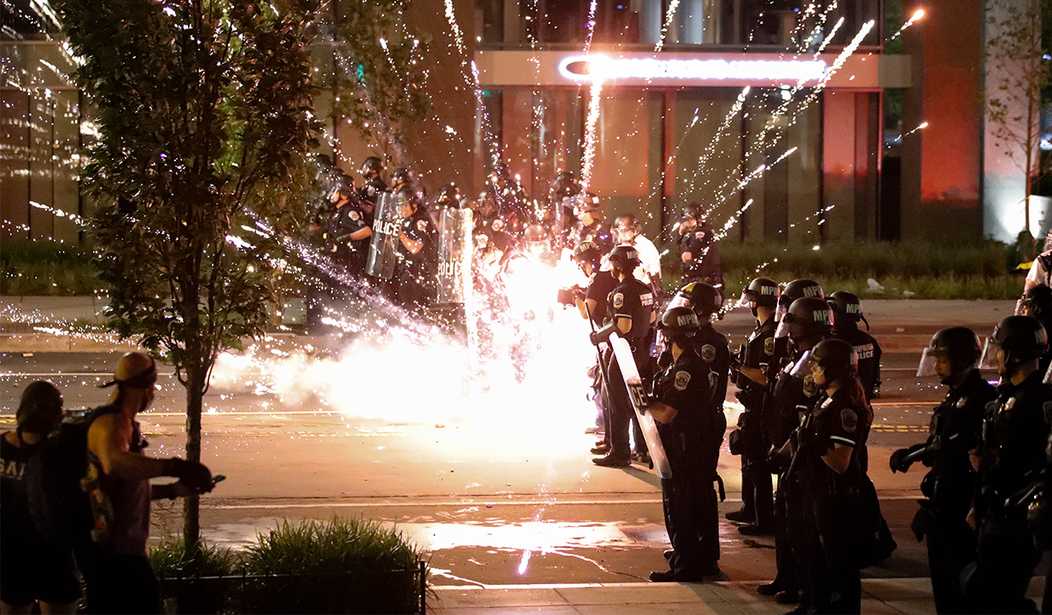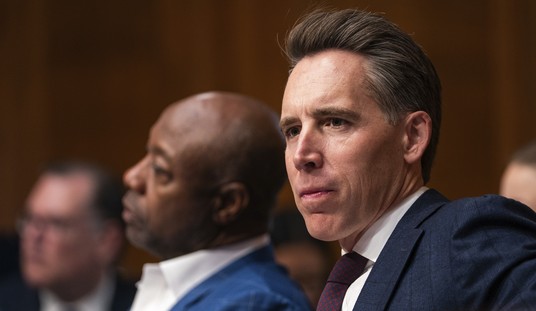Is America about to face its second civil war? The Portland antifa ally suspected of shooting a Trump supporter said a civil war was “right around the corner.” Former Hillary Clinton campaign chairman John Podesta war-gamed the 2020 election and suggested that Joe Biden may cry foul if he loses, starting off a chain reaction resulting in secession and a civil war. Far-left groups recently came together to prepare for a civil war.
While many fear a civil war may be in America’s near future, in some senses, the civil war may have already begun. When South Carolina seceded from the Union in 1861 and officially kicked off the Civil War, Americans had already been fighting one another for years. The decade of the 1850s has a great deal to teach modern Americans about how a civil war happens.
The Civil War wasn’t as clear cut as we think
In the September 2020 edition of The Atlantic, anti-racism author Ibram X. Kendi compared Donald Trump’s presidency to the 1850s, the decade leading up to the Civil War. He suggested that Trump has proved that America is still racist and that he has inspired a backlash of mass protests, “an anti-racist revolution.”
Kendi rightly noted that in the 1850s, “a critical mass of Americans rejected the South’s claim that enslavement was good and came to recognize the peculiar institution as altogether bad.” However, he wrongly suggested that this awakening to the evil of slavery was the cause of the Civil War and the ultimate abolition of slavery.
In fact, abolitionists were the minority in the North and Abraham Lincoln won on a platform of restraining the spread of slavery, not abolishing it. Lincoln wanted to return to the conditions of the Founders’ grand bargain on slavery — allowing it, but with limits — while the South pushed to expand it, steamrolling the limits the Founders put on the institution.
The South arguably brought the war on itself by partisan overreach, and the Left is arguably doing the same thing in modern America.
Arguments for Abortion Mimic the Arguments for Slavery Before the Civil War
Shortly after the United States adopted its new Constitution in 1789, the Founders passed an updated version of a bill they had passed under the Articles of Confederation two years earlier: The Northwest Ordinance. This law formed a key part of the Founders’ grand bargain on slavery. The Founders viewed slavery as an evil that could not be eradicated yet but one that must be restrained. The Northwest Ordinance prohibited the spread of slavery into the northern territories, specifically the area that would become Wisconsin, Illinois, Indiana, Michigan, and Ohio.
As Americans spread west, new states joined the Union in pairs, with one new free state for every new slave state. The Missouri Compromise of 1820 drew a line, prohibiting slavery north of that line.
However, as Kendi noted, “slaveholders expanded their reach into the North” during the 1850s. Thanks to the Compromise of 1850, southern “slave-catchers, backed by federal power, were superseding state and local law to capture runaways (and free Blacks) who had escaped across the Mason-Dixon Line. Formerly enslaved people such as Frederick Douglass and Sojourner Truth, as well as journalists such as William Lloyd Garrison, stood in pulpits across the North and West describing the brutality and inhumanity of slavery. Meanwhile, slaveholders fought to expand their power out west—where white people who did not want to compete with enslaved Black labor were calling for free soil.”
The situation was even worse than Kendi described. Pro-slavery Democrats pushed the notion of “popular sovereignty” for new states north of the Missouri Compromise line. Democrats argued that when a new northern state was entering the Union, white landowners could vote on whether the state would become free or slave. Abraham Lincoln grew to prominence by arguing against this notion.
The Kansas-Nebraska Act of 1854 opened the territories of Kansas and Nebraska to “popular sovereignty,” unleashing a flood of pro-slavery and anti-slavery settlers who turned Kansas into a war zone. “Bleeding Kansas” was a prelude to the Civil War.
Meanwhile, the Supreme Court issued the heinous Dred Scott decision in 1857, which explicitly claimed that black people “had no rights” America was “bound to respect.”
In the decades before the Civil War, the South held tremendous sway over the federal government. The vast majority of presidents before Lincoln came from the South and the South dominated Congress before the Civil War.
Americans commonly think the Civil War started because Lincoln wanted to abolish slavery while the South wanted to preserve it. In reality, the South seceded because Lincoln wanted to prevent the expansion of slavery. He wanted to return to the sort of compromise the Founders had envisioned — one that allowed the evil of slavery to persist but that also limited it, so that it might eventually become extinguished. The South forced Lincoln’s hand, and he issued the Emancipation Proclamation as a war measure to preserve the Union and the Constitution.
The North wasn’t the aggressor before the Civil War — instead, the South was abusing its power and fighting tooth and nail against Lincoln, who represented a moderate backlash to its radical pro-slavery position.
John Podesta War-Games the 2020 Election, and Suggests Biden Might Trigger a Civil War
This Civil War history puts the riots in context
Ibram X. Kendi has the analog exactly backward. Like the Democrats of the South before the Civil War, Democrats and the Left are abusing their power and overplaying their hand, forcing a moderate backlash that they falsely perceive as a threat to their survival.
Like Lincoln, President Donald Trump wants to return to the original terms of the agreement — the Constitution. After decades of far-left overreach in the courts, Trump is nominating judges and justices who pledge to abide by the original public meaning of the Constitution, not to twist it to support their own pet projects. After decades of leftist overreach in the massive expanse of the federal bureaucracy, Trump is cutting taxes and regulations to free the American economy. After decades of leftist mission creep in schools and universities, Trump is fighting the anti-American propaganda of Marxist critical theory.
On the cultural front, far-left organizations like the Southern Poverty Law Center hold tremendous sway when they accuse Trump — and scores of mainstream conservative and Christian organizations — of fomenting “hate.” The Left defends the evil of abortion in the same way the South defended slavery — first as a necessary evil, then as a positive good for which taxpayers must pay. The LGBT movement moves from same-sex marriage to transgender identity — and seeks to silence any hint of dissent, even from generally pro-LGBT figures like J.K. Rowling.
Much like the Southern Democrats who held a stranglehold on the federal government for decades before the Civil War, leftists cannot stomach the idea of dissent and pushback from their radical notions of “progress.” Trump represents an American revolt against the stifling orthodoxy of the Left, and leftists interpret him as a “Fascist” “Nazi” “Hitler” because he’s restraining the forceful expansion of their noxious ideas.
Those destructive ideas have arguably fueled the antifa and Black Lives Matter riots in Portland, Seattle, Kenosha, Chicago, and elsewhere.
For instance, the 1619 Project uses the very same Marxist critical theory that federal agencies taught under Obama to demonize America and inspire an unguided and destructive revolution. As Portland activist Lilith Sinclair put it, “There’s still a lot of work to undo the harm of colonized thought that has been pushed onto Black and indigenous communities.” As examples of “colonized thought,” she mentioned Christianity and the “gender binary.” She said she organizes for “the abolition of … the United States as we know it.”
David Dorn’s Widow Eviscerates the Black Lives Matter Narrative at the RNC
Marxist critical theory encourages people to deconstruct various aspects of society — such as capitalism, science the nuclear family, the Judeo-Christian tradition, even expectations of politeness (as the Smithsonian briefly taught) — as examples of white oppression. This inspires an aimless and destructive revolution.
When vandals toppled a statue of George Washington in Portland, they spray-painted “1619” on the statue. When Claremont’s Charles Kesler wrote in The New York Post “Call them the 1619 riots,” Hannah-Jones, responded (in a since-deleted tweet) that “it would be an honor” to claim responsibility for the destructive riots and the defamation of American Founding Fathers like George Washington.
In a November 9, 1995 op-ed, the 1619 Project founder condemned Christopher Columbus as “no different” from Adolf Hitler and demonized the “white race” as the true “savages” and “bloodsuckers.” She went on to describe “white America’s dream” as “colored America’s nightmare.” Rep. Ilhan Omar (D-Minn.) expressed a similar sentiment when she called for the “dismantling” of America’s “economy and political system,” in order to root out supposed racist oppression.
Yet the “1619 riots” have arguably oppressed black people far more than the U.S. supposedly does. The riots have destroyed black lives, black livelihoods, and black monuments. At least 26 Americans have died in the riots, most of them black.
Antifa rioters may be shooting for a race war, but many black leaders have denounced the Black Lives Matter movement. Over 100 black pastors recently condemned the Black Lives Matter movement and urged Nike to distance itself from it.
Americans do not buy the Left’s latest narrative — that America is an irredeemably racist country and that we need a revolution. If a civil war is coming, the radical left is unlikely to prevail.
That said, the recent shootings in Portland and Kenosha are extremely troubling. Both supporters of antifa and supporters of Donald Trump have at least one martyr.
In the years leading up to the Civil War, pro-slavery and anti-slavery settlers fought and killed one another in Kansas. With the benefit of hindsight, Americans see “Bleeding Kansas” as a precursor to — if not the very first tremors of — the Civil War. In one sense, the Civil War had a “soft opening” in 1854, before the main event in 1861.
It is terrifyingly plausible that the riots America is now witnessing in Portland and Kenosha may be remembered in the future as this generation’s “Bleeding Kansas,” the very first tremors of a conflict we have yet to experience.
Let’s pray that isn’t the case.
Editor’s Note: Want to support PJ Media so we can keep telling the truth about the riots and attacks on law enforcement? Join PJ Media VIP and use the promo code LAWANDORDER for 25% off your VIP membership.
Tyler O’Neil is the author of Making Hate Pay: The Corruption of the Southern Poverty Law Center. Follow him on Twitter at @Tyler2ONeil.








Join the conversation as a VIP Member